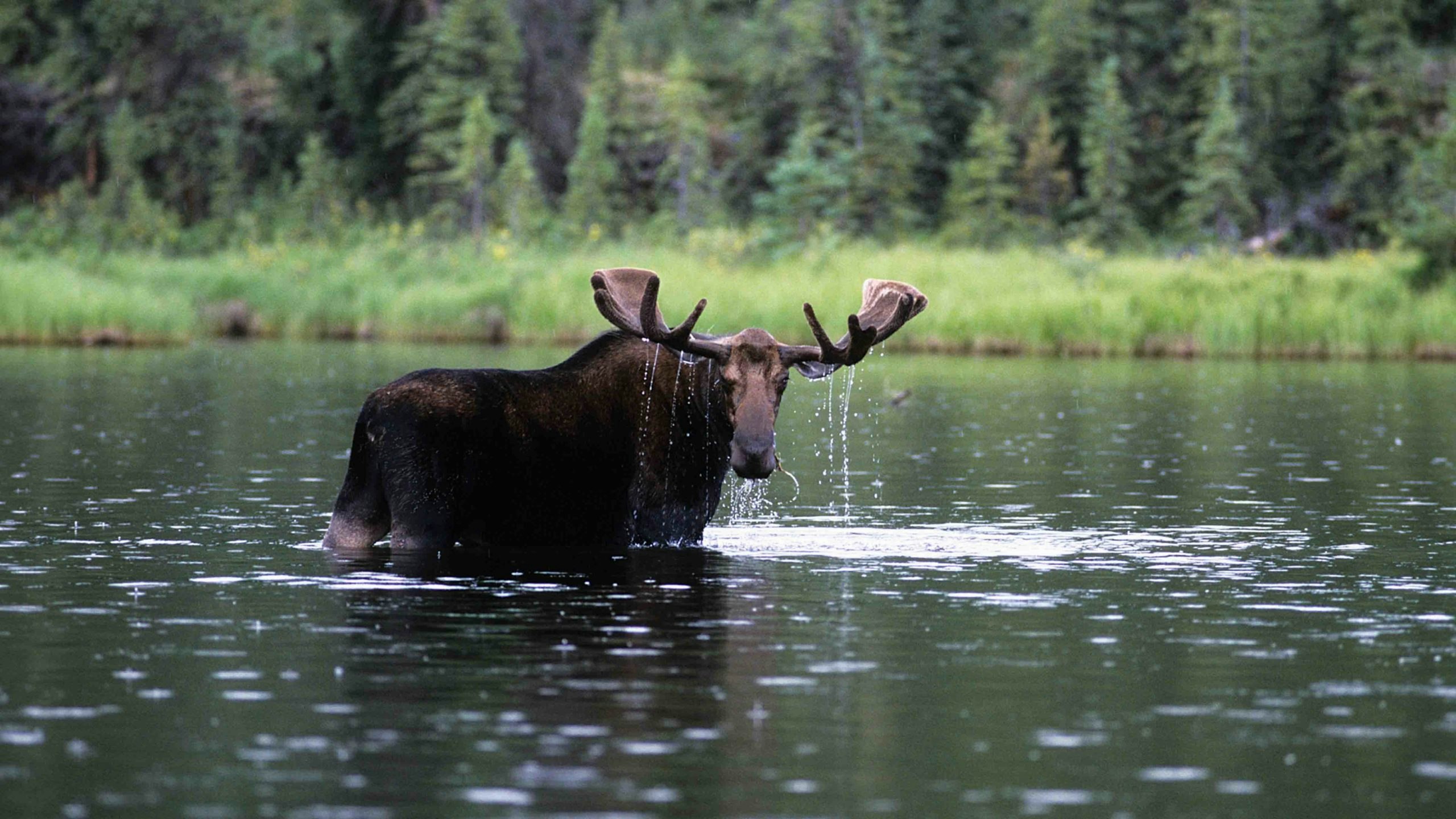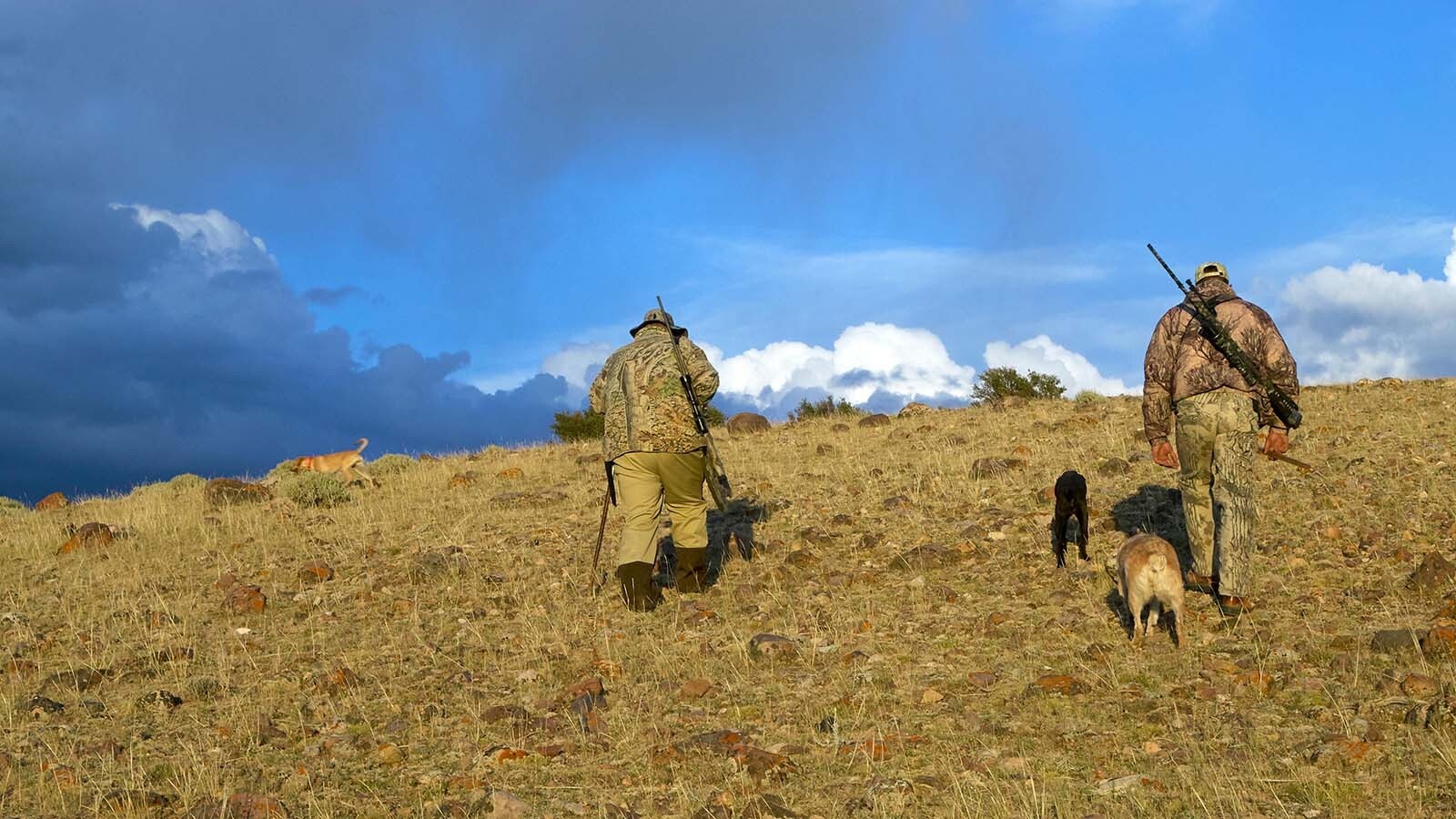By Leo Wolfson, Cowboy State Daily
The Wyoming Game and Fish Department is considering a substantial change to its “preference points” system to give longtime applicants for moose and bighorn sheep hunting licenses a better chance of drawing one of the tags.
In Wyoming, each time hunters apply unsuccessfully for a moose or bighorn sheep license, they get a “bonus point.” For each bonus point, they get one more chance in the license drawing. For example, after 10 unsuccessful applications, a hunter would get his or her name entered into the license drawing 10 times.
Under the new system, the number of bonus points a person has will be squared each year. For example, if a person had 10 preference points entering 2025, he or she would have 100 chances to draw a license. If the hunter did not draw a license that year, he or she would have 11 bonus points the following year — 121 chances to draw a license.
A person with maximum preference points now would have 31 points in 2025, giving them 961 chances to draw a license, in contrast to a first-time applicant who would have only one chance.
The new system would reduce the chances of an early applicant receiving a tag but increase the chances a longtime applicant will receive one, with the greatest increase in odds beginning after year 30.
“As with any thorny, contentious issue, there are definitely people who are very opposed to this, but we felt like it was the best way forward,” Brian Nesvik, Wyoming Game and Fish director, said during the Legislature’s Travel, Recreation, Wildlife and Cultural Resources Committee meeting May 9.
In this past year’s legislative session, lawmakers approved a bill proposed by the Wyoming Wildlife Task Force directing the Game and Fish Department to reserve 90% of the once-in-a-lifetime ram bighorn sheep, wild bull bison, bull moose, mountain goat and grizzly bear “big five” licenses for Wyoming hunters, with the remaining 10% set aside for non-residents. In the past, 75% of licenses were saved for resident hunters and 25% went to non-residents.
In-state and out-of-state applicants do not compete directly against each other for tags.
No preference points system exists for bison and mountain goat tags, which are chosen through a completely random draw and grizzly bears are federally prohibited from being hunted, so the only discussion pertaining to preference points for “big five” licenses is for bighorn sheep and moose.
The new proposal also comes from the Wyoming Wildlife Task Force.
However, the idea does not have the support of Lee Livingston, a Cody outfitter, Park County commissioner and member of the Task Force.
“I was in favor of it initially, but now that we’ve gone to 90%-10% and once in a lifetime on those species, I think we need to give a few years before we make any change,” he said.
Stacked Odds
The weighted bonus system would be implemented in 2025, and those with the highest number of preference points would still have a better chance than others of drawing a tag.
Existing high preference points holders would draw a tag with “near certainty” between 2022-2024 after being given “near maximum preference points.”
Under the current preference points system, the hunter with the highest number of points automatically gets a tag, but there are also random draws and weighted random draws. About 25% of the licenses are given out based on random draws.
Currently, in-state applicants have a 0.35% chance of drawing a license in their first year. It takes more than 30 years to have a 10% or greater chance of drawing a sheep tag and even by year 53, the chances of drawing a tag only increase to roughly 14% for sheep and 20% for moose. Numbers are far worse for out-of-state applicants.
“We say in a preference point system that at some point you will draw a tag,” said Joe Schaffer, president of Laramie County Community College. “The numbers just don’t support that; the system just isn’t sustainable.”
Schaffer helped the Game and Fish Department process numbers to analyze the the issue.
Schaffer said moose and bighorn sheep are the most desired of all hunting tags.
“How do you create a fair as possible system for all the people that want access to a very scarce resource?” he asked.
Schaffer said 15 Wyoming residents and five non-residents have the maximum 26 preference points, while more than 4,000 people apply each year for for bighorn sheep licenses.
All the applicants are vying for 180 permits awarded each year. Similar numbers exist for moose tags.
Ultimately, Schaffer said no drawing system will address game scarcity issues, so finding a way to increase moose and bighorn sheep populations must be a top priority, as the Game and Fish Department can no longer promise people will get to hunt those species at some point in their lives.
“We’ve got to a point where the system isn’t going to work the way it did when we started it,” Nesvik said.
Under bonus and weighted bonus point systems, first-time applicants are even less likely to draw, but returning customers have much better odds than they do in the current system.
“It does favor those in the system that have been applying, applying, applying and just not drawing,” Schaffer said.
Under current regulations, applicants who go two years without applying lose all their bonus points. This rule would continue under the new system.
Higher Chances But Less Revenue?
The Task Force took two key issues into consideration before making its recommendation: the substantial investment out-of-state residents have made in buying preference points, and what it does for this group of people if the state moves away from preference points to a bonus points system.
Getting rid of the preference point system comes with the risk of dissuading hunter interest and cutting into Game and Fish Department revenue.
Non-residents pay fees of $150 per year to collect preference fees, but residents pay only $7.
In 2020, revenue from non-residents for moose and sheep tags totaled $2.7 million, while revenue from residents totaled $107,485.
“I’m truly concerned with the revenue and how that would be managed in this transition,” Rep. Pat Sweeney, R-Casper, said.
Nesvik said given current demand, he doesn’t anticipate any significant drop in the number of people applying for tag with implementation of the bonus system, while Sen. Larry Hicks, R-Baggs, predicted the change would be “revenue neutral.”
Hicks also said the Task Force recognized a need to improve the chances in the license drawing for applicants who have been in the system for more than 10 years.
A few other solutions were considered, but none were considered as viable as the weighted bonus system.
Schaffer said the Task Force considered phasing out the preference points system, but found that for bighorn sheep, it would take about 90 years to phase out the current preference holders and 73 years for moose.
Cutting off all new applicants immediately while continuing the program for the rest wouldn’t help much either, with more than 30 years needed to phase out under that scenario.
Under completely random draws, Schaffer said the chances of drawing a license are about as unlikely in the short-term as they are in the current system, but grow to a more than 10% chance much more quickly than in preference points and bonus point systems.
Hicks said most other Western states use a similar non-resident preference point system and he considers it one of the most equitable systems available.
Schaffer said Arizona and Idaho have also made cuts to their non-resident access and New Mexico is even considering eliminating non-resident hunting altogether.
He said license cost increases in other states didn’t cause a decline in participation, nor have increases Wyoming has adopted in the past.
“We’re not going to see a drop off,” Schaffer said. “These are once in a lifetime opportunities. You’re still going to have some of the best odds in the United States of drawing a bighorn sheep or moose permit.”
Nesvik is not recommending extending these changes to deer, elk and antelope at this time.
“I think that there is a potential down the road that could be a solution,” he said. “There’s so much more opportunity with those other species that we thought we’d deal with the hardest to draw, the more scarcest, lowest number of tags now.”
The recommendation will be discussed further at upcoming legislative committee meetings.





